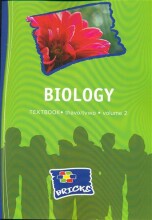Summary: Williams Textbook Of Endocrinology | 9780721691848 | P Reed Larsen
- This + 400k other summaries
- A unique study and practice tool
- Never study anything twice again
- Get the grades you hope for
- 100% sure, 100% understanding
Read the summary and the most important questions on Williams textbook of endocrinology | 9780721691848 | P. Reed Larsen ...
-
1 Introduction to the endocrine system
This is a preview. There are 8 more flashcards available for chapter 1
Show more cards here -
Hormone receptors have two qualities
1) The receptor must be able to recognize a unique binding site within the hormone in order to disriminate between the hormone and all other proteins
2) the receptor must be able to transmit the information gained from binding to the hormone into a cellular response -
Which are the classical endocrine glands who's primairy function it is to produce hormones
thyroid, pituitary, adrenal and parathyroid glands and the pancreatic islets.
Others: The brain also makes peptides, the placenta and gastrointestial tract also sythesize peptides. The ovary and testes produce sex hormones. -
The difference between hormones and neurotransmitters
Very small, some hormones can function as neurotransmitters and the other way around. If the fluid is released in the circulation its considered a hormone. If it is relseased from a nerve terminal and works locally its considered a neurotransmitter. -
What are peptide hormones
Most diverse in size, composition, humber of chains and mechanisms of production. They are synthesized after transcription of specific genes. followed by translation and processing through the endoplasmic reticulum and the Golgi apparatus.
Single chain peptides are: Growth Hormone (GH)
Double chain peptides are: Follicle-stimulating hormone (FSH), Thyroid0stimulating hormone (TSH) and Luteinizing Hornome (LH)
Cyclic tripeptide TRH. -
What are Amino Acid Analogues
THey include the iodethyroonines and amines. These iodothyronines are formed by iodination and the coupling of two tyrosines and are the only iodinated compounds with significant biologic activity.
Tyrosine is converted sequentially to dopamine, norepinephrine and epinephrine. Serotonine (5HT) is derived from tryptophan. -
Hormonal action mechanism
Cell surface receptors have three classes for both hormones and neurotransmitters. Lignands may bind to receptors that directly activate tyrosine kinases receptors that are linked via G-proteins to an effector such as adenylcyclase that activates protein kinases or receptors which regulate ion channels and then activate protein kinases or other regulatory pathways. -
Nuclear receptors: Lipid Soluble
Lipid soluble hormones such as thyroid hormone and the steroid-based hormones can penetrate the plasa membrane and interact with intracellluar receptors. -
Evaluation of the endocrine system
Clinical evaluation: history of the patient and a physical exam.
Laboratory evaluation: Sampels are analyzed in the lab. free form and bound hormone can be separeated in the equilibrium dialysis.
Provocative testing: An agent is administered to stimulate hormone release. In this way the insufficiency can be evaluated. -
2 Mechanisms of hormone secretion, action, and response
This is a preview. There are 7 more flashcards available for chapter 2
Show more cards here -
What are the three ways of cell communication
1) The Endocrine system: Chemicals secreted from one cell are recognized by recptors in another cell. Relatively slow
2) The nervous system: By electrical or chemical neurotransmitters. Signaling more rapid but limited to local transmission
3) Contact dependent signaling: Restricted to adjecent cells, important in immune responses -
What is paracrine signaling?
The target cell is close to the cell that produces the hormone
- Higher grades + faster learning
- Never study anything twice
- 100% sure, 100% understanding

































